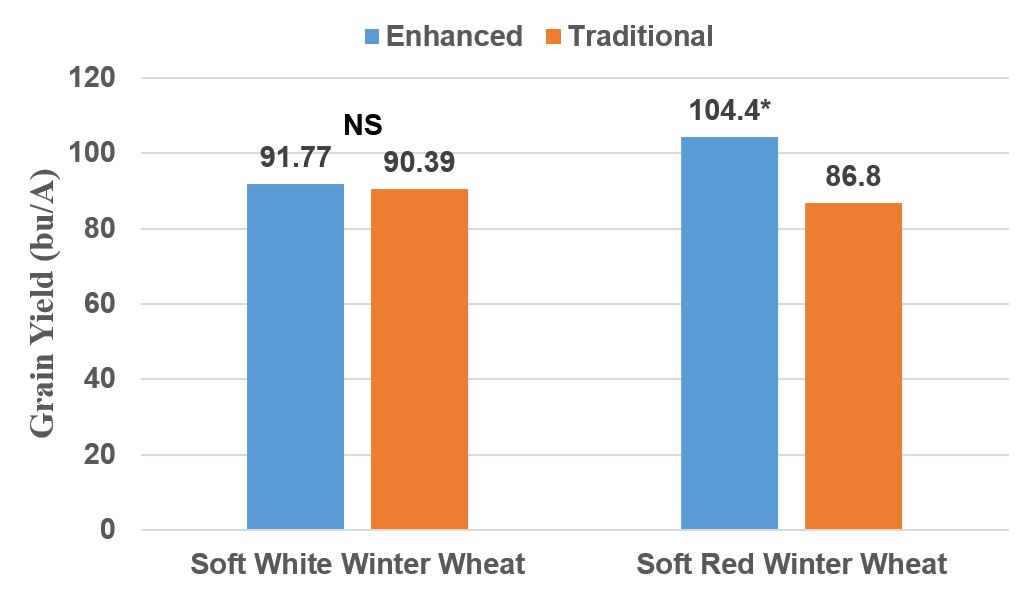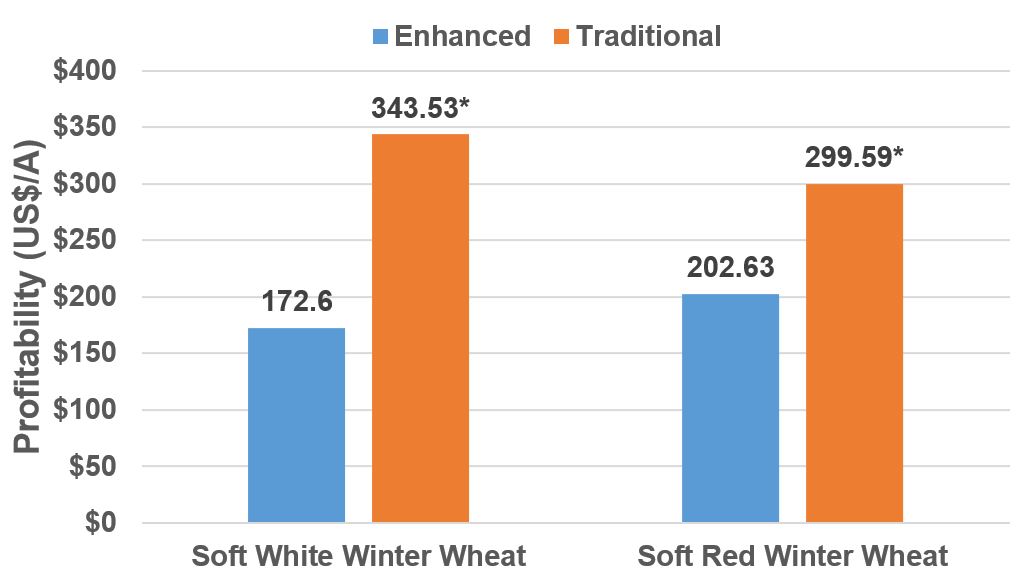Doing more with less or less with more in winter wheat?
Profitability must be considered when incorporating multiple-input management systems.

Michigan continues to produce nationally ranked wheat grain yields leading some to question whether multiple input management systems should be further considered to enhance production levels. Spring climatic variability is no stranger to the Great Lakes State and adhering to the phrase “Start right to finish well” can pay dividends especially at below critical soil nutrient concentrations. However, other management factors including below recommended seeding rates have continued to provide optimal grain yields and may better utilize both sunlight and nutrients. Can growers do more with less or in other words utilize lower seeding rates to maximize input efficiency? Alternatively, can growers do less with more or in other words utilize minimal inputs at recommended seeding rates to produce comparable grain yield and perhaps improve profitability?
To better understand winter wheat response to multiple input management systems, multi-year research trials supported by the Michigan Wheat Program were established on soft red and soft white winter wheat to compare six agronomic and nutrient inputs: seeding rate (0.9 and 1.8 million seeds per acre), fungicide, plant growth regulator, autumn starter fertilizer (12-40-0-10S-1Zn), weekly nitrogen (N) applications and increased rates of nitrogen fertilizer.
An omission trial design was utilized to evaluate individual inputs. To identify responses to the removal of individual inputs, grain yield differences were compared from wheat that received all six inputs (i.e., enhanced management) to wheat that had each individual input removed one at a time. Agronomic inputs were also evaluated by utilizing the reverse approach and adding individual inputs one at a time. Grain yield differences were then compared from wheat with no additional inputs except a base nitrogen rate (i.e., traditional management) to wheat with each individually added input. Base application rates of nitrogen fertilizer included 100 and 130 pounds nitrogen per acre for soft red and soft white wheat, respectively. The increased rates of nitrogen fertilizer consisted of a 33 percent increase in total nitrogen rate (i.e., 133 and 173 pounds nitrogen per acre, respectively, for soft red and soft white wheat). Soil properties ranged between 2.1-2.5 percent OM, 12-26 ppm phosphorus, 8-9 ppm sulfur and 2.5-5.4 ppm zinc. A blanket application of 130 and 65 pounds P2O5 were made for soft red and soft white wheat, respectively, according to soil test results.
Addition of autumn starter fertilizer to traditional management at 1.8 million seeds per acre increased yield 9.0 and 10.1 bushels per acre for soft white and soft red wheat, respectively. Adding autumn starter to traditional management increased canopy coverage 10 and 13 percent and increased spring tiller counts 72 and 23 tillers per square foot in soft red and soft white wheat, respectively, at Feekes growth stage 5. Increased tiller production, especially in the autumn, provides the potential for greater nutrient uptake and early-season growth as observed in Figure 1. Even though addition of autumn starter fertilizer to traditional management increased grain yield at both locations, profitability decreased $34 per acre for soft white. Positive autumn starter fertilizer responses may have been due to a timely autumn planting in combination with optimal growth conditions to support autumn tiller growth and development.
Enhanced management at 0.9 million seeds per acre increased yield 17.6 bushels per acre compared to traditional management at 1.8 million seeds per acre for the soft red trial, but the two management systems produced similar yields for the soft white trial (Figure 2). Compared to enhanced management, traditional management increased profitability $96 and $171 per acre for soft red and soft white winter wheat, respectively (Figure 3). Within the soft red winter wheat, the enhanced management system had an average break-even yield of 53 bushels per acre while the traditional system had an average break-even yield of 26 bushels per acre. Similar results were observed within soft white wheat as the enhanced system had an average break-even yield of 52 bushels per acre as compared to 27 bushels per acre for the traditional system.


First-year preliminary data suggested that multiple-input wheat management did not increase profitability at either location. Despite greater yield from the enhanced management system on soft red wheat, traditional management at the 1.8 million seeds per acre increased profitability at both locations as compared to enhanced management at 0.9 million seeds per acre. Producers should consider crop price, fertilizer cost, potential yield response, and profitability of individual inputs before adopting broad-spectrum multiple input management systems. Greater profitability may be achieved at lower grain yields if specific inputs adopted turn out to protect yield losses that may or may not occur. Studies will continue in 2019.
For additional information on this research trial and others, please visit the MSU Soil Fertility Research website and view our online video updates.
Dr. Steinke’s work is funded in part by MSU’s AgBioResearch.



 Print
Print Email
Email



